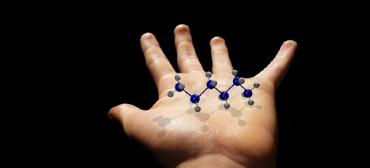Hemolytic Anemia
What is hemolytic anemia?
Hemolytic anemia is a disorder in which the red blood cells are destroyed faster than the bone marrow can produce them. The term for destruction of red blood cells is hemolysis. There are two types of hemolytic anemia, intrinsic and extrinsic.
-
Intrinsic. The destruction of the red blood cells is due to a defect within the red blood cells themselves. Intrinsic hemolytic anemias are often inherited, such as sickle cell anemia and thalassemia. These conditions produce red blood cells that do not live as long as normal red blood cells.
-
Extrinsic. Red blood cells are produced healthy but are later destroyed by becoming trapped in the spleen, destroyed by infection, or destroyed from drugs that can affect red blood cells. In severe cases the destruction takes place in the circulation. The following lists some of the causes of extrinsic hemolytic anemia:
-
Infections (such as hepatitis, cytomegalovirus (CMV), Epstein-Barr virus (EBV), typhoid fever, E. coli (escherichia coli), mycoplasma pneumonia, or streptococcus)
-
Medications (such as penicillin, antimalaria medications, sulfa medications, or acetaminophen)
-
Leukemia or lymphoma
-
Autoimmune disorders (such as systemic lupus erythematous (SLE, or lupus), rheumatoid arthritis, Wiskott-Aldrich syndrome, or ulcerative colitis)
-
Various tumors
-
Hypersplenism
-
Mechanical heart valves that may shear red blood cells as they leave the heart
-
Autoimmune hemolytic anemia (the body's immune system creates an antibody against its own blood cells)
-
Some types of extrinsic hemolytic anemia are temporary and resolve over several months. Other types can become chronic with periods of remissions and recurrence.
What are the symptoms of hemolytic anemia?
The following are the most common symptoms of hemolytic anemia. However, each individual may experience symptoms differently. Symptoms may include:
-
Abnormal paleness or lack of color of the skin
-
Jaundice, or yellowing of the skin, eyes, and mouth
-
Dark colored urine
-
Fever
-
Weakness
-
Dizziness
-
Confusion
-
Intolerance to physical activity
-
Enlargement of the spleen and liver
-
Increased heart rate (tachycardia)
-
Heart murmur
The symptoms of hemolytic anemia may resemble other blood conditions or medical problems. Always consult your doctor for a diagnosis.
How is hemolytic anemia diagnosed?
Hemolytic anemia may be suspected from general findings on a complete medical history and physical examination, such as complaints of tiring easily, pale skin and lips, or a fast heartbeat (tachycardia). In addition to a complete physical examination, your doctor may order the following diagnostic tests:
-
Blood tests. These tests measure hemoglobin and reticulocyte count and will reveal how many new red blood cells are being produced.
-
Additional blood tests. These tests check liver function as well as the presence of certain antibodies.
-
Urine tests for hemoglobin.
-
Bone marrow aspiration and/or biopsy. A procedure that involves taking a small amount of bone marrow fluid (aspiration) and/or solid bone marrow tissue (called a core biopsy), usually from the hip bones, to be examined for the number, size, and maturity of blood cells and/or abnormal cells.
Treatment for hemolytic anemia
Specific treatment for hemolytic anemia will be determined by your doctor based on:
-
Your age, overall health, and medical history
-
Extent of the disease
-
Cause of the disease
-
Your tolerance for specific medications, procedures, or therapies
-
Expectations for the course of the disease
-
Your opinion or preference
The treatment for hemolytic anemia will vary depending on the cause of the illness. Treatment may include:
-
Blood transfusions
-
Corticosteroid medications
-
Treatment with intravenous immune globulin (to strengthen the immune system)
-
Rituximab
In more severe cases, the following treatments may be necessary and usually require hospitalization:
-
Exchange transfusion (similar to a blood transfusion but with more blood being given and an equal amount of hemolyzed blood being removed)
-
Surgical removal of the spleen
-
Immunosuppressive therapy





















